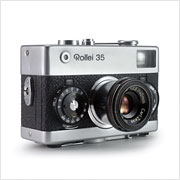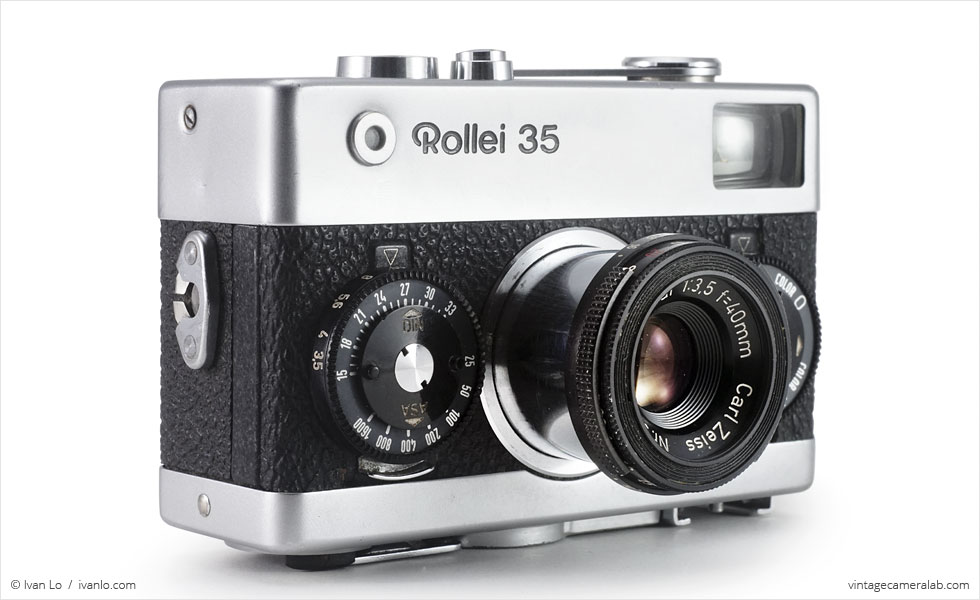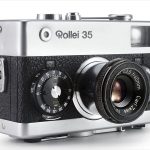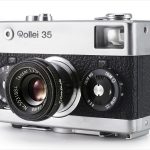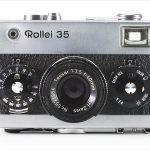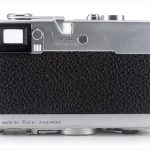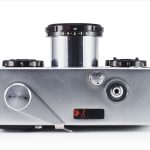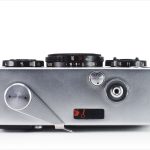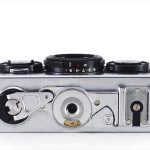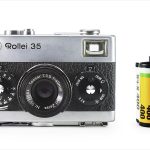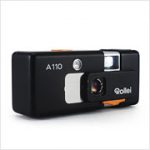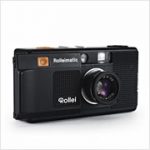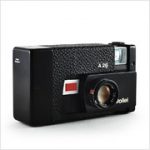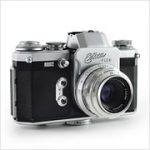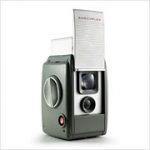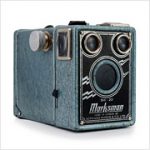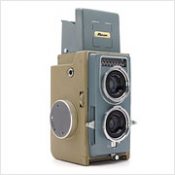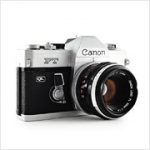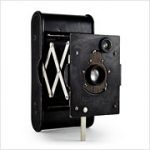Rollei 35 Specifications
| Manufacturer: | Rollei-Werke Franke & Heidecke |
| Origin: | West Germany |
| (modern day Germany) | |
| Made in: | Singapore |
| Introduced: | 1966 |
| Type: | Viewfinder |
| Format: | 135 Film |
| Dimensions: | 9.6 x 6.8 x 4 cm (closed) |
| 9.6 x 6.8 x 5.7 cm (open) |
Rollei 35 Overview
The Rollei 35 was a revolutionary viewfinder camera debuted in 1966 by Rollei-Werke Franke & Heidecke and is still one of the smallest full-frame 35mm cameras ever made. Curiously, the story of this legendary camera begins not at Rollei, but at rival camera manufacturer Wirgin in the early 1960s. Wirgin’s chief designer Heinz Waaske had just finished developing the Edixa 16—a subminiature camera which parasitically made use of its competitor’s proprietary 16mm film cassette while offering itself as a more economical alternative to the Rollei 16.
Now with the Edixa 16 in production, Waaske used his newfound spare time to pen designs for a new compact 35mm camera. Most smaller 35mm models at the time were half-frame, meaning that each exposure only utilized 50% of the available space on the film. Smaller negatives meant lower image quality so Waaske tasked himself with creating a camera that could be as small as possible while still utilizing the entire frame, a monumental task that forced him to rethink and redesign basic camera components. Taking advantage of Edixa’s equipment and suppliers, Waaske fleshed out a prototype with a Steinheil Cassar 40mm f/3.5 lens and presented it to his superiors who criticized him for wasting company resources on what appeared to be as a personal project and immediately shot it down. Clearly unappreciated, Waaske left the company shortly afterwards.
Seeking employment within the German camera industry, Waaske presented his prototype to Leica and Eastman Kodak‘s branch in Stuttgart but was rejected by both companies. Wary of leading with his apparently insufficiently innovative camera design, Waaske kept it under wraps and quietly found a new job with Rollei in January 1965. Months later, company director Heinrich Peesel discovered the prototype by chance and immediately ordered Waaske to refine it so that the design could be fast-tracked for mass production. By late 1966, the cutting edge Rollei 35 was finally introduced to the world. We can only speculate on how the executives of Wirgin, Leica, and Kodak reacted in light of the Rollei 35’s massive commercial success, knowing that Waaske had once offered it to them on a silver platter only to be turned away. If it weren’t for Peesel, a visionary who stepped in to save the company from financial ruin in the 1960s, would Rollei have passed on this amazing design as well? We are fortunate that this is a question without an answer.
As you might expect, the Rollei 35 squeezes quite a lot into a diminutive package. Its main party piece is the Zeiss Tessar 40mm f/3.5 lens which retracts into the body when not in use but telescopes out and locks into place easily for shooting. Focus is tuned by rotating the ring at the end of the lens barrel. The shutter speed is controlled via a dial on one side of the lens while the aperture is set using a similar one on the other. Film type and film speed indicators are also nested in those same dials, respectively. The top plate of the Rollei 35 is home to a threaded shutter button, a lens release button (which will only allow the lens to retract when the shutter is cocked), a light meter readout window, and the film advance lever. The bottom plate hosts the hot shoe, the latch to release the back for loading and unloading film, a standard 1/4″ tripod socket, frame counter, and film rewind knob. The back of the Rollei 35 features the film rewind release lever next to the viewfinder window and the camera’s serial number.
I’m quite fond of the Rollei 35 both for its beautifully ingenious design and its tenuous history. My example is in good working order and is in good cosmetic condition as well, with only a few dents, dings, minor brassing, and a US Social Security number carved into it. While I try to avoid buying cameras with Social Security numbers engraved into them (a curiously common practice from this era), I’m always interested in looking them up when it does happen. This particular number belonged to one Walter Herrmann, a brilliant mechanical engineer from South Africa who worked as a researcher at the Massachusetts Institute of Technology during the Cold War. This probably makes me the least qualified owner this camera has had so far.
Find your very own Rollei 35 on eBay.
McKeown, James M. and Joan C. McKeown’s Price Guide to Antique and Classic Cameras, 2001-2002. (Grantsburg, WI, USA: Centennial Photo Service, 2001), p 586.
“The Rollei 35 Story,” Rolleiclub, http://www.rolleiclub.com/cameras/35classic/info/index.shtml
“Rollei 35,” Wikipedia, https://en.wikipedia.org/wiki/Rollei_35
“Heinz Waaske,” Wikipedia, https://en.wikipedia.org/wiki/Heinz_Waaske
